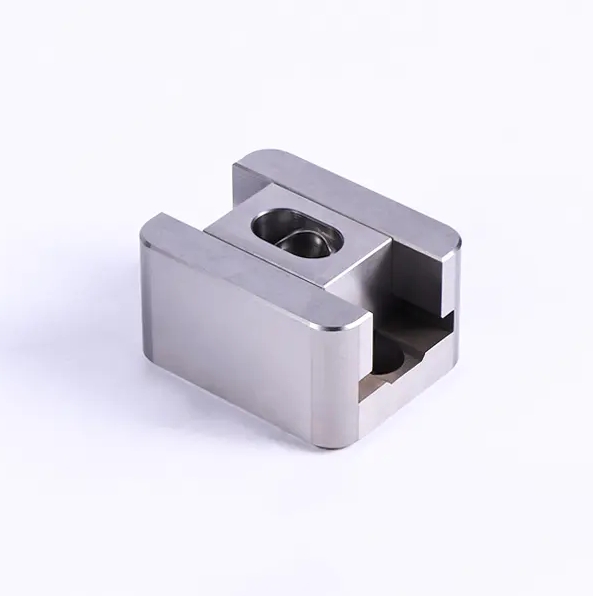Email: [email protected]
The Role of Mould Ejector in Modern Automation
In the dynamic landscape of modern manufacturing, the injection molding industry has witnessed a transformative shift towards automation. Central to this evolution is the mould ejector, a critical component that has significantly enhanced the efficiency and precision of the production process. By seamlessly integrating with automated systems, the mould ejector has not only streamlined operations but also reduced human intervention, thereby lowering production costs and boosting overall productivity.
The Integration of Mould Ejector in Automated Production Lines
The journey from raw plastic material to a finished product in an injection molding facility is a complex and highly coordinated process. At the heart of this process is the mould ejector, which plays a pivotal role in ensuring that each cycle of production is executed with precision and efficiency. In traditional setups, the removal of molded parts from the mold was often a manual task, fraught with the risk of inconsistencies and delays. However, with the advent of automation, the mould ejector has become a cornerstone of continuous, uninterrupted production.
In contemporary injection molding facilities, the mould ejector is synchronized with robotic arms and conveyor systems. Once the plastic material is injected into the mold and cooled, the mould ejector springs into action. It precisely and reliably ejects the molded part from the cavity, ensuring that the part is released without any damage. This ejected part is then swiftly transferred by robotic arms to the next stage of the production line, where it undergoes further processing such as trimming, assembly, or quality inspection.
This integration of the mould ejector with automated systems has revolutionized the production floor. The precision and reliability of the mould ejector ensure that each part is ejected at the time, reducing the likelihood of defects and rework. Moreover, the seamless handoff to robotic systems minimizes downtime, allowing for a continuous flow of production. This not only enhances the throughput but also ensures that each part meets the standards of quality and consistency.
Enhanced Efficiency and Reduced Costs
The impact of the mould ejector on production efficiency cannot be overstated. In an automated environment, the mould ejector operates with a level of precision and speed that far surpasses manual methods. The ability to eject parts consistently and without error means that production cycles can be shorter and more frequent. This increased frequency directly translates to higher output volumes, enabling manufacturers to meet growing demands more effectively.
Moreover, the reduction in human intervention has significant cost-saving implications. Manual ejection processes often require skilled labor, which can be both expensive and prone to variability. By automating this process with the mould ejector, manufacturers can allocate their workforce to other critical tasks, thereby optimizing labor resources. Additionally, the consistency and reliability of the mould ejector reduce the incidence of defects, which in turn lowers scrap rates and associated costs.

Quality Control and Consistency
In addition to efficiency gains, the mould ejector also plays a crucial role in maintaining product quality. The precision with which the mould ejector operates ensures that each part is ejected without any residual stress or damage. This is particularly important for complex or delicate parts, where even minor imperfections can to functional or aesthetic issues.
The integration of the mould ejector with automated quality control systems further enhances this aspect. Sensors and cameras can be positioned to inspect the ejected parts immediately, identifying any anomalies in real-time. This immediate feedback loop allows for swift corrective actions, ensuring that only parts meeting the quality standards proceed to the next stage of production.
Future Trends and Innovations
As the injection molding industry continues to evolve, the role of the mould ejector is set to expand even further. Advances in materials science and engineering are to the development of more durable and efficient mould ejector components. These innovations promise to enhance the longevity and performance of the mould ejector, further reducing maintenance requirements and downtime.
Moreover, the integration of artificial intelligence and machine learning technologies is poised to transform the mould ejector into a smarter, more adaptive component. These technologies will enable the mould ejector to learn from production data, optimizing its performance based on real-time feedback. This adaptive capability will not only improve efficiency but also enhance the ability to predict and prevent potential issues before they arise.
The mould ejector has come a long way from being a simple mechanical component to becoming a sophisticated, integral part of modern automated production systems. Its seamless integration with robotic arms, conveyor systems, and quality control mechanisms has revolutionized the injection molding industry, offering levels of efficiency, consistency, and cost savings.
As we look to the future, the continued evolution of the mould ejector promises even greater advancements. With innovations in materials, engineering, and intelligent technologies, the mould ejector will continue to play a vital role in shaping the future of injection molding. For manufacturers, this means a future where production is not only more efficient and cost-effective but also more reliable and sustainable.
Get in touch
Related recommendations
